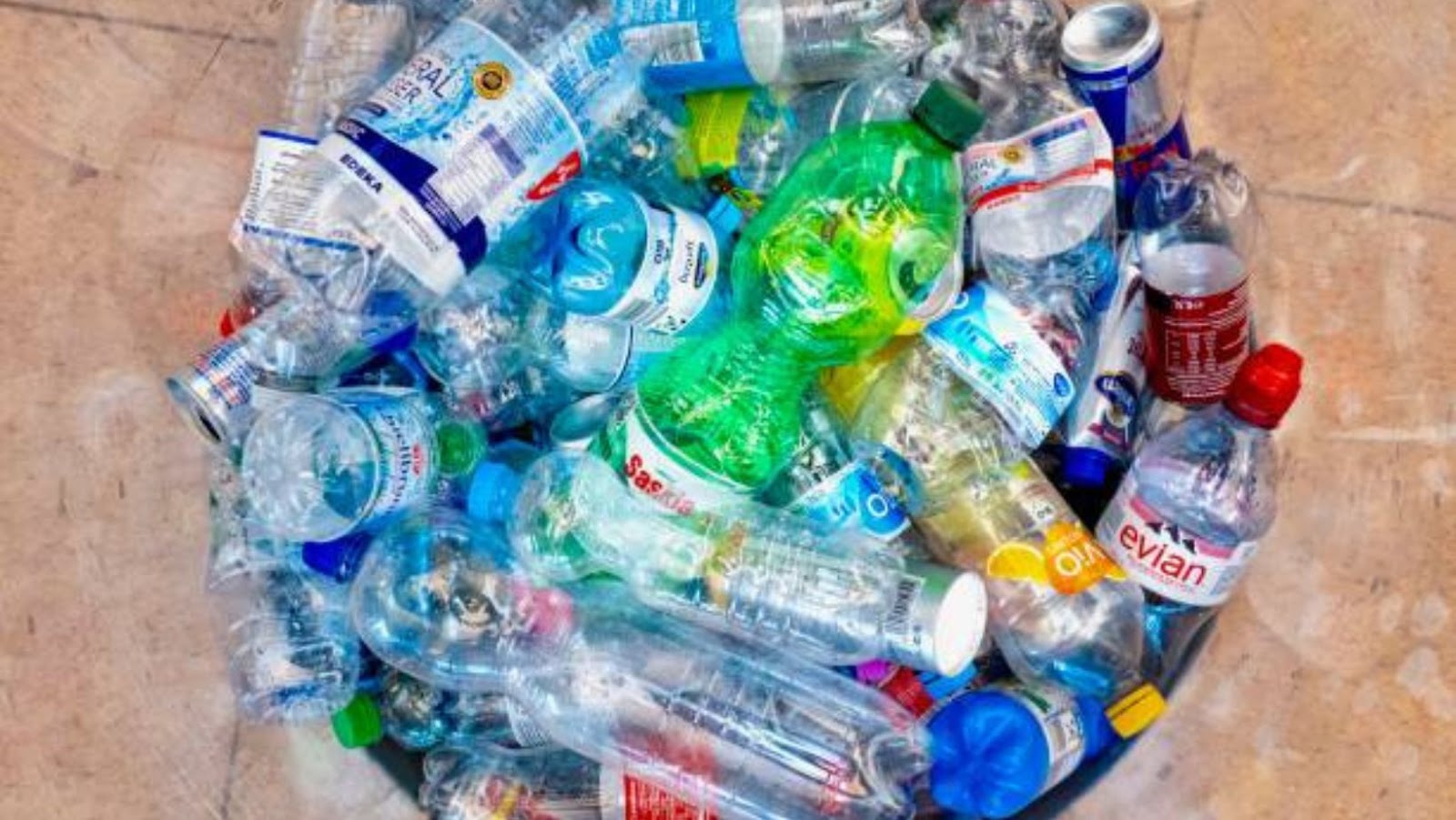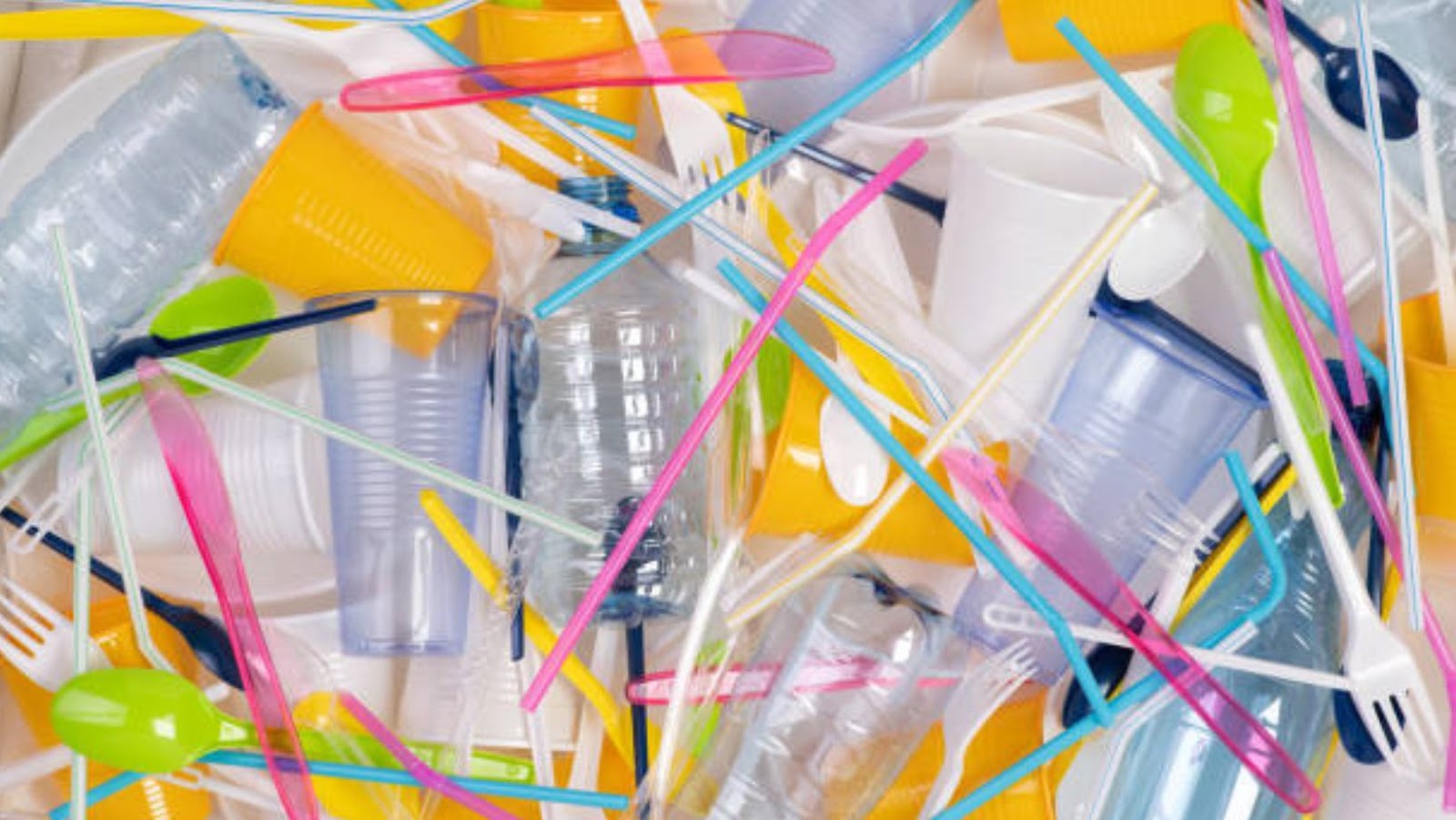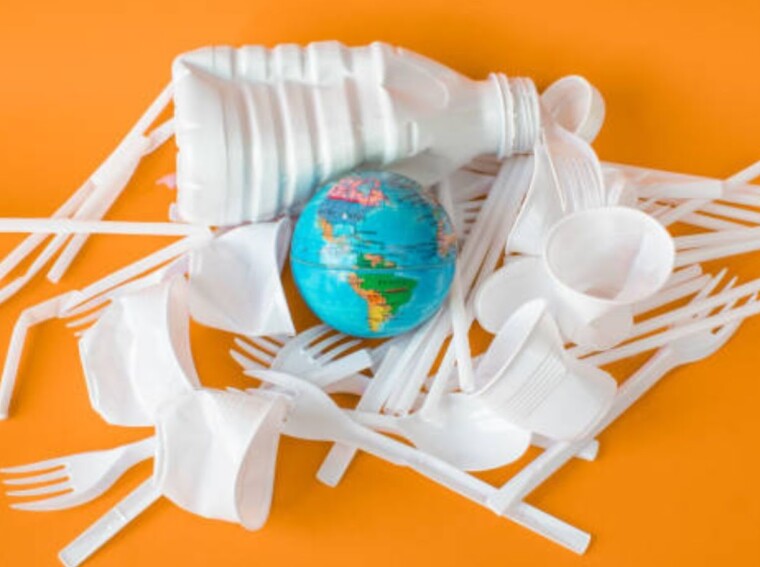India is one of the world’s largest contributors to the single-use plastic problem, with an estimated 26,000 tonnes of plastic waste generated daily. The rampant use of single-use plastic bags, straws, bottles, and packaging has led to severe environmental, economic, and health issues, impacting the country’s ecosystems, wildlife, and human lives.
To combat the issue, the government of India has launched several initiatives, including the Swachh Bharat Abhiyan and the Plastic Waste Management Rules, 2016, to reduce plastic waste and promote sustainable practices. However, effective implementation and enforcement of these policies remain a challenge.
As responsible citizens, we can contribute to the cause by reducing our daily use of single-use plastics, recycling, and advocating for community policy changes.
It’s high time we all address this issue before it’s too late.
Single-Use Plastics: An Overview
Single-use plastics have become a major concern for many countries around the world. India, in particular, accounts for a large amount of the global plastic pollution, primarily due to the prevalence of these plastics in everyday life.
Prime Minister Narendra Modi recently announced that India is willing to join a global effort to phase out single-use plastics.
In this article, we will examine the issue of single-use plastics, its consequences and India’s contribution to this problem.
Defining Single-Use Plastics
Single-use plastics are defined as plastic items that are used only once before being disposed of or discarded. These products include plastic bags, straws, cutlery, food packaging, and water bottles. Single-use plastics have become a severe environmental and health hazard worldwide, and India is among the top contributors to this problem.
India generates an estimated 26,000 tonnes of plastic daily, with single-use plastics making up a significant portion. However, these plastics do not biodegrade and can take thousands of years to break down, leading to massive pollution of oceans and landfills.
The Indian government has introduced several initiatives to curb single-use plastics, including bans on certain items and campaigns to create citizen awareness. Additionally, there is a growing push towards using sustainable alternatives like cloth bags, bamboo cutlery, and glass bottles.
The Problems with Single-Use Plastics
Single-use plastics are one of the biggest environmental challenges we face today. Unfortunately, these plastics are used only once before being discarded, contributing to landfills, oceans, and harming wildlife.
India is one of the countries contributing to the global single-use plastic problem, generating around 26,000 tonnes of plastic waste daily. Single-use plastic bags, straws, and cutlery are some of India’s major culprits of plastic pollution.
The problem with single-use plastics lies in their non-degradable nature, which means they stay in the environment for hundreds of years, causing harm to ecosystems and wildlife. Apart from that, their production requires non-renewable fossil fuels, which makes them a major contributor to greenhouse gas emissions.
Necessary steps are required, like switching to biodegradable and reusable alternatives and spreading awareness, to tackle the problem effectively.
The Role of South Asian Countries in Single-Use Plastic Pollution
Single-use plastic pollution is a worldwide problem, however, South Asian countries have a significant role in contributing to this issue. In particular, India has become one of the world’s largest contributors to single-use plastic pollution due to its extensive use across various industries and a lack of strict measures to regulate its usage.
To address this critical issue, India has taken some significant steps such as banning single-use plastic bags in several states, increasing taxes on plastic products, and launching awareness campaigns to educate people about the negative impact of single-use plastics on the environment.
Along with India, other South Asian countries must develop strict policies and regulations to limit their use of single-use plastics in various industries. Additionally, promoting sustainable alternatives and encouraging the reuse of plastics can significantly help mitigate the single-use plastic problem in the region.

India’s Plastic Problem
India is the world’s second-largest producer of plastic waste, with an estimated 15 million tonnes of plastic waste produced each year.
To reduce the single-use-plastic problem, Prime Minister Modi has declared India’s commitment to join the global fight against single-use plastic by 2022.
In this article, we will discuss India’s contribution to the single-use plastic problem and the government’s steps to tackle it.
Current State of Single-Use Plastics in India
India is one of the top contributors to the global single-use plastic problem, generating 26,000 tonnes of plastic waste daily. Unfortunately, most of this waste is not collected or recycled, leading to significant environmental pollution and health hazards.
The Indian government has announced several initiatives to address this issue, including banning certain single-use plastics such as bags, cutlery, and straws. However, enforcement remains challenging, with many manufacturers and sellers continuing to use and sell prohibited plastics.
To combat the issue, it is important that individuals take responsibility for reducing their use of single-use plastics and actively seek alternatives, such as cloth bags, metal straws, and reusable containers.
Pro tip: Encouraging local businesses and governments to switch to eco-friendly options and setting up community-led recycling programs can also significantly reduce the country’s plastic problem.
India’s Attempt to Tackle Plastic Waste
India is making a significant effort to tackle the problem of plastic waste, which has become a major environmental concern.
The Indian government has implemented several initiatives to address the issue, including:
Ban on single-use plastic: India has banned the use of single-use plastic in several states and cities, including Delhi, Maharashtra, and Tamil Nadu. The government has also set a target to eliminate single-use plastics by 2022.
Extended Producer Responsibility (EPR): The EPR policy mandates manufacturers and producers to manage the entire life cycle of their plastic products, including its disposal and recycling.
Swachh Bharat Abhiyan (Clean India Mission): A nationwide campaign to promote cleanliness, hygiene, and sanitation. The initiative focuses on proper waste management and reducing plastic waste on streets and water bodies.
These initiatives are part of India’s contribution to tackling the global plastic waste problem. It has shown a significant reduction in plastic waste in cities implementing the single-use plastic ban.
Challenges to Eliminating Single-Use Plastic in India
Eliminating single-use plastic in India is challenging due to various factors, including a lack of awareness, inadequate waste management infrastructure, and dependence on plastic for daily use.
The government has taken steps to address the issue, such as banning single-use plastics in certain cities and implementing waste management rules. Still, these efforts have faced industry resistance and low compliance from citizens.
However, grassroots movements have emerged, spreading awareness about plastic pollution and promoting sustainable alternatives nationwide.
To overcome the challenges of eliminating single-use plastic requires an integrated approach involving government action, private sector engagement, and individual responsibility.
Pro tip: Make a conscious effort to reduce the use of plastic in your daily life by carrying reusable bags, bottles, and containers, and supporting environmentally responsible brands.

Rajkotupdates.news: pm modi india happy to join single use plastic
Prime Minister Narendra Modi of India recently announced a ban on single-use plastic nationwide, to reduce the country’s contribution to global environmental destruction.
This ban comes in response to the increasing plastic pollution that has been increasingly visible in our country and other parts of the world.
This article will discuss the details and implications of the new policy proposed by PM Modi to further reduce India’s contribution to global plastic pollution.
Key Features of the Ban
India’s single-use plastic ban has several key features that make it a significant step towards the global struggle to curb plastic pollution.
Here are the key features of the ban-
1. The use, production, and import of single-use plastic items like bags, cutlery, and straws are banned.
2. Plastic packaging of food and toiletries must be made of compostable plastic or other eco-friendly alternatives.
3. Businesses must collect and recycle the plastic waste generated by their operations.
4. The ban is enforced through penalties and fines on individuals and businesses who violate the rules.
This move is one of the country’s strongest legislative actions to mitigate plastic pollution. The ban aims to reduce India’s plastic waste output by 30% and sets an example for other countries to take action against single-use plastics.
The Success of the Ban
In 2019, Indian Prime Minister Narendra Modi instituted a ban on single-use plastic items to reduce the country’s contribution to the plastic waste problem. The ban has been largely successful and helped shift consumer behavior towards more sustainable alternatives.
As a result of the ban:
- Plastic bag usage has decreased by 50-60% in Indian cities.
- Multi-use bags made of cloth or paper have become more popular.
- Increased awareness and education about plastic waste has led to more individuals and businesses adopting sustainable practices.
While implementing the ban has been some challenges, such as a lack of affordable alternatives and difficulty enforcing the regulations in rural areas, the overall impact has been positive.
The success of India’s single-use plastic ban serves as an example for other countries to follow in the fight against plastic waste. Pro tip: Opt for reusable bags and bottles as these small switches make a big difference.
Criticisms of the Ban
Critics of Modi’s single-use plastic ban argue that it may create more harm than good, as the ban could lead to a rise in the use of alternative materials like paper and cloth, which has environmental concerns. Additionally, the ban may adversely affect small businesses that heavily relied on plastic packaging, which could lead to unemployment and financial instability.
However, the Indian government has implemented this ban to tackle the country’s severe plastic pollution crisis, contributing to the global plastic waste problem. In addition, the ban has encouraged the public to shift towards eco-friendly alternatives such as glass and metal, and retailers have started increasing the supply of biodegradable and compostable packaging materials.
While the ban has limitations, it encourages individuals and businesses alike to reduce plastic consumption and move towards more sustainable options.

The Way Forward For India
In a recent statement, Prime Minister Narendra Modi of India has expressed the country’s readiness to join the global fight against single-use plastic. This move is the latest step in India’s commitment to reduce environmental pollution.
As India moves forward with this pledge, let’s explore the way for India to take measures to reduce single-use plastic and its impact on the environment.
Alternative Materials to Single-Use Plastic
India is one of the world’s largest users of single-use plastic, contributing to the growing plastic waste problem. Fortunately, many alternative materials are available that can replace single-use plastic and promote a sustainable future.
Here are some alternative materials to consider:
Biodegradable plastics: These are made from natural materials such as corn and potato starch and break down faster than traditional plastic.
Paper: Paper products, such as bags and straws, are biodegradable and can be made from sustainable sources like bamboo and jute.
Glass: Glass containers and bottles are reusable and recyclable, making them an eco-friendly alternative to plastic.
Metal: Metal containers and bottles are also reusable and recyclable, and can be made from sustainable materials like stainless steel.
By adopting these alternative materials, India can reduce its dependence on single-use plastics and promote a cleaner, healthier environment.
The Importance of Recycling
Recycling is crucial for a sustainable future, and it is not just an option but a responsibility that we all have towards safeguarding our planet. India, one of the largest consumers and producers of single-use plastic worldwide, must take significant steps to address its contribution to the plastic problem.
The importance of recycling cannot be overstated, as it helps to:
- Reduce landfills by diverting waste from the dumping grounds
- Save resources by using recycled materials to create new products
- Reduce pollution from waste that contaminates bodies of water and air
Recycling is a simple yet effective step towards creating a cleaner and healthier environment. And as individuals, we can encourage recycling by reducing our plastic usage, segregating our waste, and advocating for more environmentally friendly policies.
Community Involvement and Awareness
Community involvement and awareness are crucial in tackling India’s single-use plastic problem.
India generates more than 9 million tons of plastic waste annually, much of which is in landfills, oceans, and waterways. Individuals, local governments, businesses, and organizations need to come together and take action to overcome this issue.
Here are some ways to promote community involvement and awareness:
1. Conduct educational campaigns to spread awareness about the impact of plastic pollution and the importance of responsible waste management.
2. Encourage using eco-friendly alternatives to single-use plastic items, such as cloth bags, metal straws, and reusable water bottles.
3. Organize community clean-up drives to collect and recycle plastic waste.
4. Lobby local governments to implement regulations and policies that restrict or ban single-use plastics.
By working together, the people of India can create a cleaner and more sustainable future for themselves and the generations to come.

Conclusion
India’s decision to join the global movement against single-use plastic has been met with much enthusiasm. Prime Minister Narendra Modi has been vocal in his commitment to finding solutions to the global environmental crisis, and this move could have far reaching consequences.
This article has looked into India’s contribution to the single-use plastic problem, and it is now time to draw some conclusions.
Recap of India’s Single-Use Plastic Problem
India’s single-use plastic problem has been a major environmental threat, and the country has been grappling with this issue for a long time. The sheer scale of the country’s waste generation and lack of effective waste management has only added to the problem.
However, India has recently made significant strides towards addressing this issue. In 2019, the Indian government announced a plan to phase out single-use plastics by 2022. This included banning six single-use plastic items such as carry bags, straws, plates, etc. Additionally, the government has taken several measures to promote recycling, reduce waste generation, and encourage sustainable alternatives.
While India has a long way to go in solving its single-use plastic problem, the government and individuals’ recent efforts indicate that the country is committed to addressing this issue and reducing its contribution to the global plastic crisis.
The Need for Continued Action
India has made significant strides in addressing the single-use plastic problem, but continued action is still needed to ensure a sustainable future.
India has banned single-use plastics in several states and municipalities, invested in waste management infrastructure, and promoted public awareness campaigns. However, the country still faces challenges in implementing and enforcing these initiatives.
The Indian government, private sector, and citizens must work together to reduce plastic waste, invest in sustainable alternatives, and promote a circular economy.
Continued action is crucial to ensure a cleaner and healthier environment for future generations, and to combat the devastating impacts of plastic pollution on wildlife and ecosystems.
Final Thoughts
In conclusion, India has significantly contributed to solving the single-use plastic problem worldwide. With frequent awareness campaigns, plastic bans, and regulatory measures, India has shown that solving the plastic problem is achievable. However, there is still a need for ongoing efforts to address the problem fully.
We must continue to prioritize finding sustainable, eco-friendly alternatives to single-use plastics and encourage their adoption through proper education and awareness campaigns. We must also advocate for stronger regulations and penalties for those not complying with eco-friendly and sustainable practices.
Finally, we must recognize that change will not happen overnight and be consistent in our efforts to reduce single-use plastics. With collective action, we can overcome this pressing environmental challenge and pave the way for a better and more sustainable future. Let’s all take responsibility for our actions and play an active role in positively impacting the environment.
